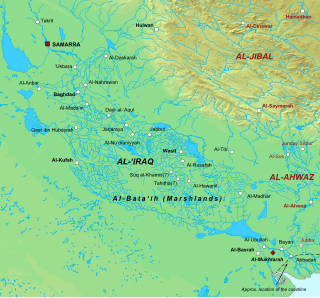The 860s decade ran from January 1, 860, to December 31, 869.
The 870s decade ran from January 1, 870, to December 31, 879.
The 880s decade ran from January 1, 880, to December 31, 889.

Year 842 (DCCCXLII) was a common year starting on Sunday of the Julian calendar, the 842nd year of the Common Era (CE) and Anno Domini (AD) designations, the 842nd year of the 1st millennium, the 42nd year of the 9th century, and the 3rd year of the 840s decade.
The 920s decade ran from January 1, 920, to December 31, 929.
The 930s decade ran from January 1, 930, to December 31, 939.

Year 891 (DCCCXCI) was a common year starting on Friday of the Julian calendar.

Year 866 (DCCCLXVI) was a common year starting on Tuesday of the Julian calendar.

Year 870 (DCCCLXX) was a common year starting on Sunday of the Julian calendar, the 870th year of the Common Era (CE) and Anno Domini (AD) designations, the 870th year of the 1st millennium, the 70th year of the 9th century, and the 1st year of the 870s decade.

Abu’l-ʿAbbās Aḥmad ibn Jaʿfar ibn Muḥammad ibn Hārūn al-Muʿtamid ʿalā’Llāh, better known by his regnal name al-Muʿtamid ʿalā 'llāh, was the caliph of the Abbasid Caliphate from 870 to 892. His reign marks the end of the "Anarchy at Samarra" and the start of the Abbasid restoration, but he was largely a ruler in name only. Power was held by his brother al-Muwaffaq, who held the loyalty of the military. Al-Mu'tamid's authority was circumscribed further after a failed attempt to flee to the domains controlled by Ahmad ibn Tulun in late 882, and he was placed under house arrest by his brother. In 891, when al-Muwaffaq died, loyalists attempted to restore power to the Caliph, but were quickly overcome by al-Muwaffaq's son al-Mu'tadid, who assumed his father's powers. When al-Mu'tamid died in 892, al-Mu'tadid succeeded him as caliph.

Ya'qūb ibn al-Layth al-Saffār, was a coppersmith and the founder of the Saffarid dynasty of Sistan, with its capital at Zaranj. Under his military leadership, he conquered much of the eastern portions of Greater Iran consisting of modern-day Iran, Afghanistan, Turkmenistan, Uzbekistan, Tajikistan as well as portions of western Pakistan and a small part of Iraq. He was succeeded by his brother, Amr ibn al-Layth.

The Zanj Rebellion was a major revolt against the Abbasid Caliphate, which took place from 869 until 883. Begun near the city of Basra in present-day southern Iraq and led by one Ali ibn Muhammad, the insurrection involved both enslaved and freed East Africans or Abyssinians exported in the Indian Ocean slave trade and transported to slavery in the Abbasid Caliphate in the Middle East, principally to drain the region's salt marshes. It grew to involve slaves and freemen, including both Eastern Africans and Arabs, from several regions of the Caliphate, and claimed tens of thousands of lives before it was fully defeated.

Abu 'l-Gharaniq Muhammad II ibn Ahmad was the eighth Emir of Ifriqiya from 864 to 875.
The Battle of Dayr al-Aqul was fought on 8 April 876, between forces of the Saffarid ruler Ya'qub ibn Laith and the Abbasid Caliphate. Taking place some 80 km southeast (downstream) of Baghdad, the battle ended in a decisive victory for the Abbasids, forcing Ya'qub to halt his advance into Iraq.
Abu Ahmad Ṭalḥa ibn Jaʿfar ibn Muḥammad ibn Hārūn al-Muwaffaq bi'Llah, better known by his laqab as Al-Muwaffaq Billah, was an Abbasid prince and military leader, who acted as the de facto regent of the Abbasid Caliphate for most of the reign of his brother, Caliph al-Mu'tamid. His stabilization of the internal political scene after the decade-long "Anarchy at Samarra", his successful defence of Iraq against the Saffarids and the suppression of the Zanj Rebellion restored a measure of the Caliphate's former power and began a period of recovery, which culminated in the reign of al-Muwaffaq's own son, the Caliph al-Mu'tadid.

Ja'far ibn Ahmad al-Mu'tamid, better known by his laqab al-Mufawwid ila-llah, was a son of the Abbasid caliph al-Mu'tamid and heir-apparent of the Caliphate from 875 until his sidelining by his cousin al-Mu'tadid in 891.
Ishaq ibn Kundaj or Kundajiq, was a Turkic military leader who played a prominent role in the turbulent politics of the Abbasid Caliphate in the late 9th century. Initially active in lower Iraq in the early 870s, he came to be appointed governor of Mosul in the Jazira in 879/80. He ruled Mosul and much of the Jazira almost continuously until his death in 891, despite becoming involved in constant quarrels with local chieftains, as well as in the Abbasid government's rivalry with the Tulunids of Egypt. On his death he was succeeded by his son, Muhammad, but in 892 the Abbasid government under Caliph al-Mu'tadid re-asserted its authority in the region, and Muhammad went to serve in the caliphal court.
Masrur al-Balkhi was a senior military officer in the late-9th century Abbasid Caliphate.

The al-Ahwaz theater was one of two major areas of operations during the Zanj Rebellion, the other being the regions of lower and central Iraq. Beginning in 869, Zanj armies repeatedly entered the province of al-Ahwaz and succeeded in scoring several victories against the defending forces of the Abbasid Caliphate. Over the course of the next decade, the rebels attacked and looted many of the cities in the region, including Suq al-Ahwaz, 'Askar Mukram and Ramhurmuz. By the height of the rebellion in the mid-870s the Zanj were effectively in control of extensive portions of the province, appointing governors to the districts under their sway and collecting supplies from the local population. During this period, the Zanj in al-Ahwaz were usually commanded by 'Ali ibn Aban al-Muhallabi, a primary lieutenant of the overall Zanj leader 'Ali ibn Muhammad.

The Iraq theater was one of two major areas of operations during the Zanj Rebellion, the other being the neighboring province of al-Ahwaz.










